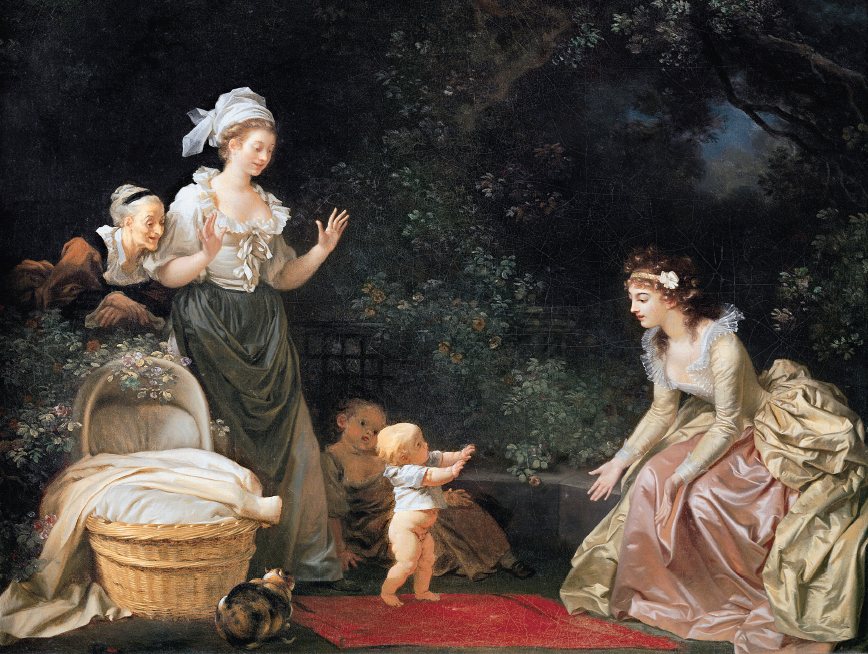Understanding Western Society
Printed Page 554
| > | What was life like for children, and how did attitudes toward childhood evolve? |

The First Step of ChildhoodThis tender picture of a baby’s first steps toward an adoring mother exemplifies new attitudes toward children and raising them that were ushered in by the Enlightenment. Authors like Jean-Jacques Rousseau encouraged elite mothers like the one pictured here to take a more personal interest in raising their children instead of leaving them in the hands of indifferent wet nurses and nannies. Many women responded eagerly to this call, and the period saw a more sentimentalized view of childhood and family life. (Erich Lessing/Art Resource, NY)
OON THE WHOLE, western European women married late but then began bearing children rapidly. If a woman married before she was thirty, and if both she and her husband lived to fifty, she would most likely give birth to six or more children. Infant mortality varied across Europe but was very high by modern standards, and many women died in childbirth due to limited medical knowledge.
For those children who did survive, new Enlightenment ideals in the latter half of the century stressed the importance of parental nurturing. New worldviews also led to an increase in elementary schools throughout Europe, but formal education reached only a minority of ordinary children.